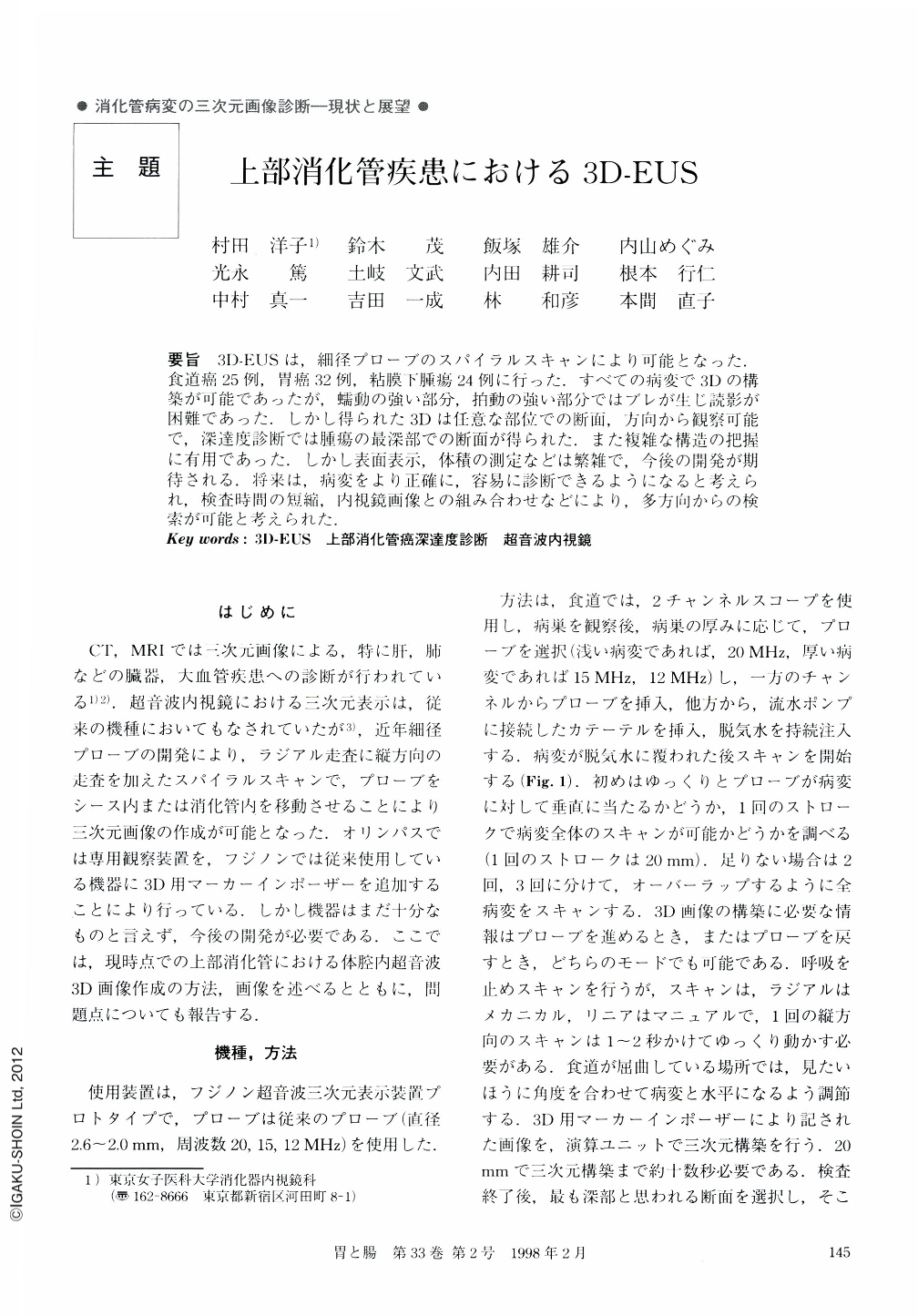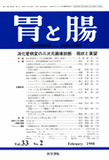Japanese
English
- 有料閲覧
- Abstract 文献概要
- 1ページ目 Look Inside
要旨 3D-EUSは,細径プローブのスパイラルスキャンにより可能となった.食道癌25例,胃癌32例,粘膜下腫瘍24例に行った.すべての病変で3Dの構築が可能であったが,蠕動の強い部分,拍動の強い部分ではブレが生じ読影が困難であった.しかし得られた3Dは任意な部位での断面,方向から観察可能で,深達度診断では腫瘍の最深部での断面が得られた.また複雑な構造の把握に有用であった.しかし表面表示,体積の測定などは繁雑で,今後の開発が期待される.将来は,病変をより正確に,容易に診断できるようになると考えられ,検査時間の短縮,内視鏡画像との組み合わせなどにより,多方向からの検索が可能と考えられた.
Since technology for scanning a small probe spirally has been developed, 3D-EUS has become possible. One paper has already been published concerning 3D-EUS used conventionally. The 3D imaging system (Fujinon Co) was employed. In 25 cases of esophageal cancer, 32 cases of gastric cancer and 24 cases of submucosal tumor, 3D-EUS was used and compared with 2D images and histological results. 3D images were made in all cases, but the linear lines were wavy where there were pulsations or strong peristalsis. The diagnosis of the depth of tumor invasion was more precisely determined by tomography in different parts and in varying directions. Moreover if the tumor's shape is complicated, a 3D-image can help make it understood better. However, surface display and measurement of tumor volume are complicated. If 3D-EUS can be further developed as has CT or MRI, it is hoped that diagnosis made by using it will become easier and more precise.

Copyright © 1998, Igaku-Shoin Ltd. All rights reserved.


